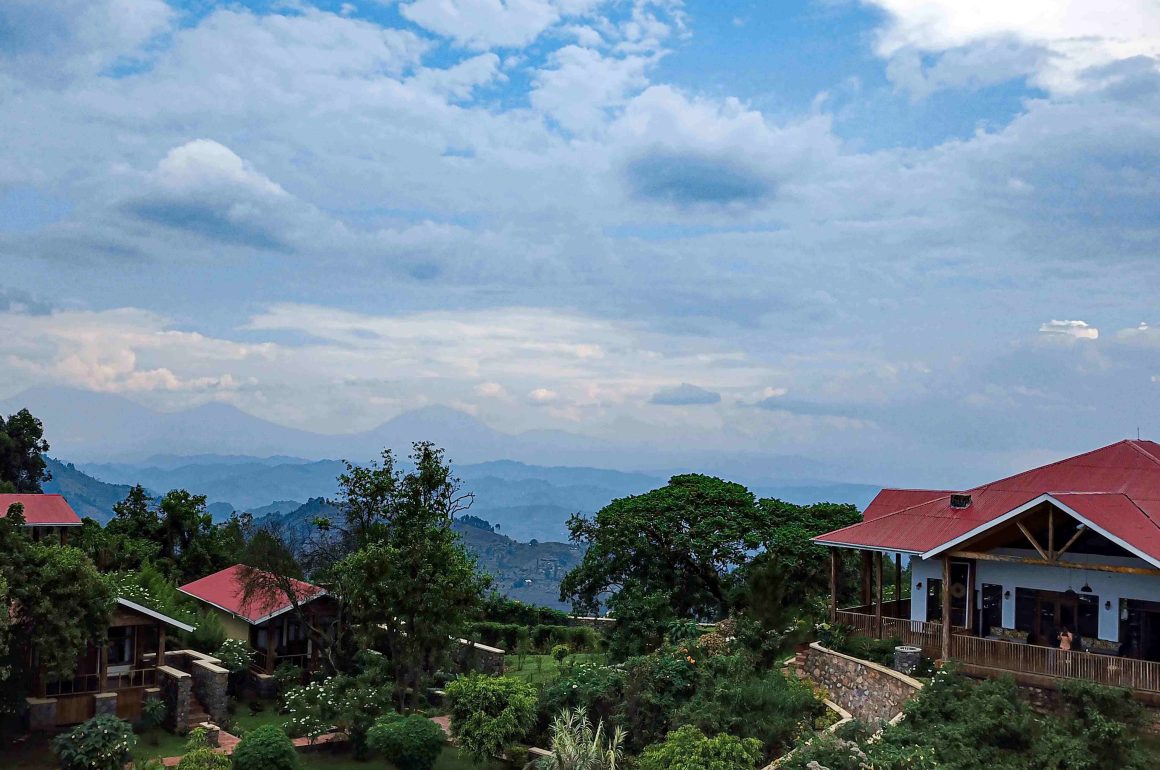
Which bird species do you think is the biggest attraction to visitors of your lodge (please only name one species)?
The most iconic and sought-after bird species around the lodge area in Nombe Forest is the African Green Broadbill (Pseudocalyptomena graueri).
What is the name of your lodge, and since when has your lodge been operating?
Nkuringo Bwindi Gorilla Lodge, operating since 2007
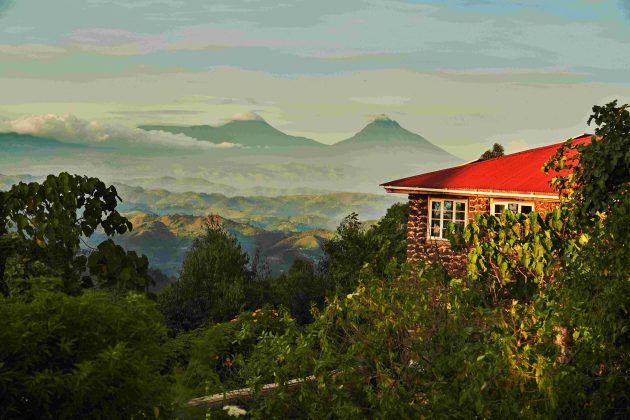
How best to travel to your lodge?
The best way to travel to Nkuringo Bwindi Gorilla Lodge is typically by a combination of air and road, either by flying into Kisoro or Kihihi Airstrip and then taking a road transfer to the lodge or driving directly by road for a more scenic and adventurous approach. For ease and comfort, booking our safari vehicle is highly recommended.
What kind of services – except for accommodation and food – does your lodge offer to visiting birders?
- Guided Bird-Watching Tours: The lodge offers expert-guided birding tours. Knowledgeable local bird guides lead these tours, helping birders spot and identify various species, some of which are endemic to the region. Birding tours can be customized based on the guest’s interests, whether they want to focus on specific species or explore different habitats within the forest.
- Birding Checklists and Resources: For avid birders, Nkuringo Bwindi Gorilla Lodge provides birding checklists and other useful resources, such as field guides or information on the birds of Bwindi. These can be used during self-guided walks or to aid the birding guides in identifying the species guests encounter.
- Cultural Experiences with Birding Focus: While the main focus is on nature, the lodge also offers cultural tours. These tours sometimes incorporate elements of birding, especially if visiting local communities that are situated within or near birding hotspots. The Batwa, for example, have a deep cultural connection to the forest and can provide insights into the bird species they associate with local traditions.
Green-backed Cameroptera
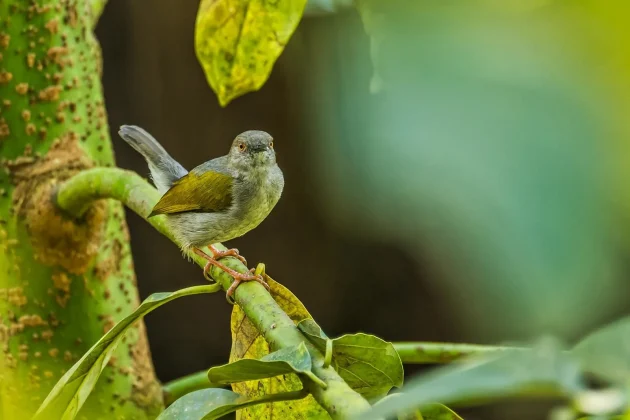
What makes your lodge special?
1. Stunning Location with Breathtaking Views
- Proximity to Bwindi Impenetrable Forest: The lodge is nestled on the southern edge of Bwindi Impenetrable Forest, offering breathtaking views of the forest canopy and the lush valleys below. It’s an ideal base for gorilla trekking and birdwatching, with easy access to the park’s most sought-after gorilla families.
- Scenic Vistas: Guests enjoy panoramic views of the mist-covered forest and surrounding hills, providing an exceptional backdrop for relaxation after a day of adventure.
2. Gorilla Trekking Experiences
- Close to Trekking Starting Points: The lodge is located 5 minutes’ walk to the Nkuringo gorilla trekking starting point, making it incredibly convenient for guests heading out to see the endangered mountain gorillas. This close proximity reduces travel time and ensures you can start your trek early, giving you the best chance of seeing the gorillas.
- Unique Gorilla Families: Nkuringo Bwindi Gorilla Lodge gives guests the chance to trek in the southern sector of Bwindi, home to unique gorilla families such as Nkuringo gorilla family: The first gorilla family to be habituated in 1997, and the most interesting to visit. The group was named after the local area where it was first spotted, and is currently led by Silverback Rwamutwe. Bushaho gorilla family: A breakaway group from the Nkuringo family, led by Bahati. Christmas gorilla family: The newest family in Nkuringo, named after the silverback called Christmas. Muhozi gorilla family: Another gorilla family in the Nkuringo area.
3. Personalized Service and Comfort
- Boutique Lodge with High-Quality Amenities: The lodge combines comfort with a rustic, yet elegant, atmosphere. It offers well-appointed cottages, each with private balconies that provide stunning views of the forest. The rooms are spacious, luxurious, and designed with attention to detail, making guests feel at home in the heart of the wilderness.
- Exceptional Service: The staff at Nkuringo Bwindi Gorilla Lodge are known for their warmth, professionalism, and personal touch. From the welcoming hand massages and warm towels on arrival to personalized service throughout your stay, guests are made to feel pampered and cared for.
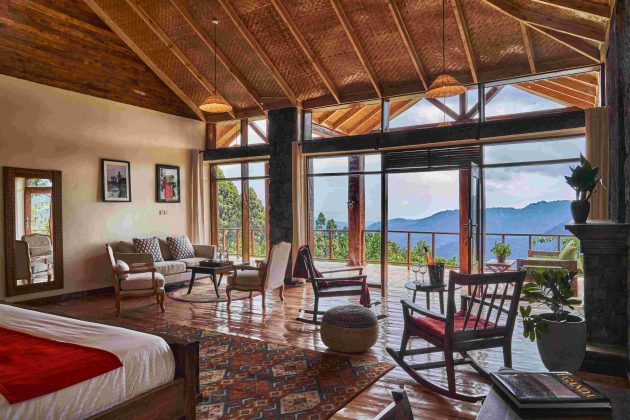
4. Conservation and Community Engagement
- Sustainable Practices: Nkuringo Bwindi Gorilla Lodge is deeply committed to conservation and sustainability. The lodge uses eco-friendly practices, including solar power, water recycling, and waste management to minimize its environmental footprint. It plays an active role in preserving the biodiversity of Bwindi Impenetrable Forest.
- Community Support: The lodge also invests in the local community, providing employment opportunities, supporting local businesses, and contributing to community development projects. Guests are encouraged to engage with the local communities, and many cultural experiences are available, including village visits and interactions with indigenous groups.
5. Cultural and Local Experiences
- Cultural Tours and Interaction: Nkuringo Bwindi Gorilla Lodge provides guests with the opportunity to engage in local cultural experiences. Visitors can participate in guided walks through nearby communities, visit local schools, or learn about the traditions of the Batwa people, an indigenous group with a deep connection to the forest.
- Traditional Cuisine: The lodge offers a variety of local and international dishes, prepared with fresh ingredients. Meals are served in a cozy dining area with panoramic views of the surrounding landscape, enhancing the overall dining experience.
What are the 10 – 20 most interesting birds that your lodge offers good chances to see?
- African Green Broadbill (Pseudocalyptomena graueri): Endemic to the Albertine Rift. Why Interesting: One of the most sought-after species, known for its vibrant green coloration and elusive nature. It’s a highlight for birders in Bwindi.
- Great Blue Turaco (Tauraco melanocephalus): Widely distributed in Central Africa, but rarely seen. Why Interesting: Famous for its striking blue plumage and distinctive call. It’s one of the iconic forest species of Bwindi.
- White-tailed Blue Flycatcher (Muscicapa phoenicura): Resident in the forest. Why Interesting: This flycatcher is vibrant blue and commonly spotted in the forest understory.
- Rwenzori Turaco (Tauraco johnstoni): Endemic to the Rwenzori and Virunga mountains. Why Interesting: Known for its striking green, blue, and purple feathers, this is another iconic bird of Bwindi.
- Black-billed Turaco (Tauraco schuettii): Endemic to the Albertine Rift. Why Interesting: This turaco has a beautiful mix of greens and reds, often spotted in the upper canopies of Bwindi’s trees.
- Mountain Masked Apalis (Apalis personata): Endemic to Bwindi and the Rwenzori Mountains. Why Interesting: A small, colorful songbird found in the high-altitude parts of Bwindi. Its distinctive markings make it a favorite for birdwatchers.
- Grauer’s Rush Warbler (Bradypterus graueri): Endemic to the Albertine Rift. Why Interesting: Known for its secretive behavior, this warbler can be challenging to spot but is highly rewarding when seen.
- Yellow-eyed Blackbird (Agropsar philippinus): Rare but resident in Bwindi. Why Interesting: Known for its distinct yellow eyes and striking appearance, it’s a rare find in Bwindi’s marshy areas.
- Bar-tailed Trogon (Harpactes reinwardti): Occurs throughout Central and East Africa. Why Interesting: This bird has a beautiful combination of iridescent colors, with a distinctive barred tail. It’s a magnificent bird that’s often seen in dense forest habitats.
- Eastern Mountain Greenbul (Andropadus orientalis): Endemic to the Albertine Rift. Why Interesting: Known for its greenish plumage and distinctive calls, this bird thrives in the montane forests of Bwindi.
- Fire-crested Alethe (Alethe castanea): Endemic to the Albertine Rift. Why Interesting: A secretive forest species, known for its beautiful reddish-orange plumage. It is often found in the undergrowth of Bwindi’s dense forest.
- Black-collared Lovebird (Agapornis swindernianus): Found in forests across Central Africa. Why Interesting: These colorful, social birds are often seen in small flocks, flying low through the forest.
- White-chinned Prinia (Prinia leucogenys): Endemic to the Albertine Rift. Why Interesting: This small and active bird is usually found in the grassy undergrowth, adding a touch of variety to the birdlife in Bwindi.
- Black-headed Waxbill (Estrilda atricapilla): Found throughout East Africa. Why Interesting: This colorful bird is often spotted in dense vegetation and adds a splash of color to the forest’s bird life.
- African Harrier-Hawk (Polyboroides typus): Widespread in Africa. Why Interesting: Known for its acrobatic flight and ability to hunt in difficult-to-reach places, this hawk can be seen hunting in the Bwindi forest.
- Dusky Crimson-wing (Cryptospiza shelleyi): Endemic to the Albertine Rift. Why Interesting: A beautifully colored bird that’s often seen in the dense undergrowth of the forest, making it a prized sighting.
- Pygmy Kingfisher (Ceyx pictus): Found throughout sub-Saharan Africa. Why Interesting: A tiny and vibrant kingfisher that often inhabits the edge of rivers and streams. Its brilliant colors make it an exciting sight.
- Barred Long-tailed Cuckoo (Cercococcyx montanus): Found in montane forests in East Africa. Why Interesting: A secretive species, the cuckoo is known for its long tail and distinctive call. It’s a rare sight but an exciting find for birders.
- Yellow-throated Tinkerbird (Pogoniulus subsulphureus): Found in central and eastern Africa. Why Interesting: This small woodpecker-like bird is often heard before it’s seen, making it a fun species to track down in the forest.
- Swamp Flycatcher (Muscicapa aquatic): Widespread in the forested wetlands of Africa. Why Interesting: A strikingly beautiful bird with a sleek design, often found near water sources within the forest.
Black-billed Weaver
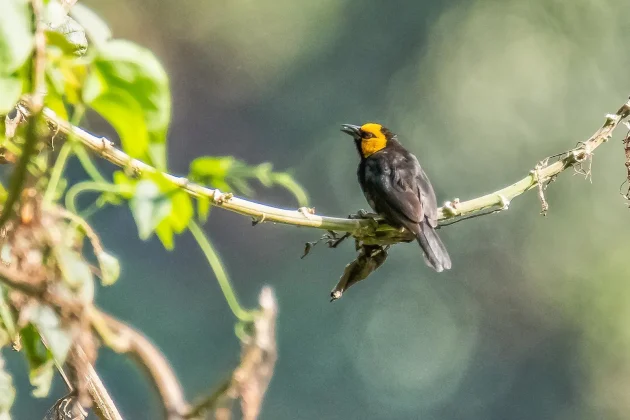
What is the best time to visit your lodge, and why?
Dry Seasons (June to September and December to February):
- Weather: These months offer the most pleasant weather, with less rain and more sunshine. The trails are less muddy and easier to navigate, which is important when trekking through the rugged terrain of Bwindi Impenetrable Forest.
- Gorilla Trekking: During the dry season, gorilla trekking is more comfortable, as the trails are less slippery and the chances of encountering rain during your trek are lower. Since Bwindi is a tropical rainforest, the wet season can make the trails slippery and challenging, but during the dry months, the forest is a bit more accessible.
- Bird Watching: The dry season is also great for birding, as the birds are often easier to spot in the clearer weather. The visibility is generally better for both birders and wildlife photographers.
- Tourist Numbers: The dry seasons are more popular with tourists, meaning there may be more people around, but this also offers the benefit of a wider selection of activities, events, and guided tours.
Green Season (March to May and October to November):
- Lush Scenery: If you prefer lush green landscapes and fewer tourists, the green season might be ideal. The forest is vibrant with fresh growth, and the wildlife is abundant. This is a great time for photography, as the landscape is full of life and color.
- Rain: While you may experience more rain, it’s usually in the form of afternoon showers, which means the mornings are often clear for trekking and birding. The trails may be muddier and more challenging during this time, but trekking can still be rewarding.
- Gorilla Trekking: Trekking during the green season can be a bit more difficult due to the rain, but the benefit is fewer tourists and potentially more intimate encounters with the gorillas. Plus, gorilla permits might be slightly cheaper during these off-peak months.
- Fewer Crowds: If you prefer a quieter experience with fewer tourists, the green season offers a more peaceful and personal experience.
Chubb’s Cisticola
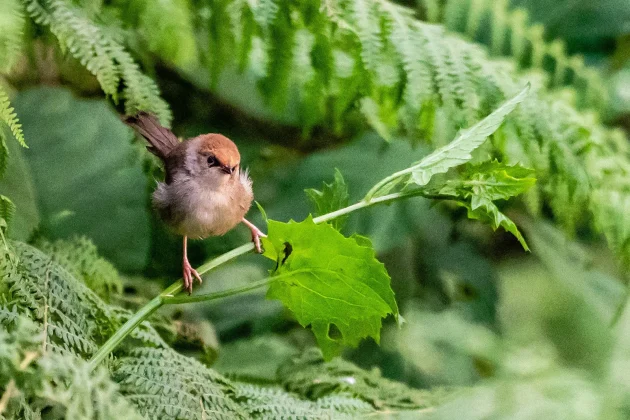
Is your lodge involved in conservation efforts? If yes, please describe them.
- The Lodge prides itself on its green credentials and proudly operates as a carbon-neutral lodge through various initiatives, including solar energy and rainwater harvesting, farm-to-plate cuisine, and solid conservation initiatives.
- To reduce the use of plastic in the Lodge, we provide water in Jars and encourage all clients to always use their water bottles.
- Preservation of the Forest (Plant a Tree) – For a $20 donation, you can plant a tree around the lodge, with all proceeds going towards the Community Center.
What other suggestions can you give to birders interested in visiting your lodge?
1. Clothing & Gear:
- Lightweight, Quick-Dry Clothing: Wear moisture-wicking, long-sleeve shirts and pants to protect against bugs and brush. The weather can be unpredictable, so having layers is key.
- Sturdy Hiking Boots: Since the terrain in Bwindi can be steep and muddy, a good pair of waterproof, supportive boots is essential for comfort and safety.
- Rain Gear: Bwindi is in a rainforest, so rain showers are frequent. Pack a lightweight rain jacket or poncho and keep your gear in waterproof bags to protect your equipment.
- Hat and Sunglasses: For sun protection during the day and keeping cool while out on the trails.
- Gloves and Gaiters: For protection against thorns, nettles, and mosquitoes.
2. Birding Equipment:
- Binoculars: Bring a good quality pair of binoculars (8×42 or 10×42 are great options for birding).
- Field Guide: A bird field guide for Uganda or East Africa is very helpful, though a knowledgeable local guide will assist with identification.
- Camera & Lenses: If you enjoy photographing birds, bring a DSLR or mirrorless camera with a telephoto lens (200mm or more) to capture the beautiful species in the forest.
- Notepad/Journal: To record observations of bird species, behaviors, and any other interesting observations during your birding.
3. Health & Safety:
- Insect Repellent: Malaria is a risk in Uganda, so pack a strong insect repellent with DEET or other effective ingredients to protect against mosquito bites.
- Sunscreen: Even on cloudy days, it’s important to protect your skin from UV rays.
- First Aid Kit: Carry basic medical supplies, including plasters, antiseptic, pain relievers, and any personal medication.
- Water Bottle: Stay hydrated, especially when hiking in the humid conditions of the forest.
4. Birding Preparation:
- Local Guide: Birding in Bwindi is best done with a local guide who knows the forest, bird species, and can help spot elusive birds. We have expert guides.
- Learn About the Birds: Research the bird species that are common in Bwindi. Key birds to look for include the African Green Broadbill, Great Blue Turaco, and various species of forest hornbills and sunbirds.
- Early Start: Bird activity is highest during the early morning hours, so plan to start birding early to maximize sightings.
- Patience and Quiet: Birds in the forest can be shy, so it’s important to stay patient, move quietly, and pay attention to calls and movements in the trees.
5. Physical Preparation:
- Fitness Level: Birding in Bwindi requires some physical exertion as trails can be challenging. You might need to hike steep, muddy paths, so being in good physical condition is beneficial.
- Trekking Permits: For some birding areas, such as Gorilla Trekking, you may need to obtain a permit in advance. Confirmation of a trekking permit is a must.
6. Respect Local Culture and Wildlife
Do you have activities for non-birders? If so, please describe.
- The Gorilla Tracking Experience: Nkuringo Bwindi Gorilla Lodge provides a prime access point to the world-renowned Bwindi Impenetrable Forest, home to the iconic mountain giants, the elusive Mountain Gorillas
- Nature walking Adventures such as the
- Ivy River Trail (13 km, 4-6 hours): This Ivy River trail is the oldest route through the Bwindi Impenetrable Forest and an important footpath for locals traveling from Nteko to Buhoma, particularly on market days. There are three ways to hike the Ivy River trail: the first one leaves Nkuringo, walking 8 kilometers to Nteko village, and another 5 kilometers down the steep valley to Ivy River and back. The second starts at the Nteko outpost, 8 km from Nkuringo, where your driver would have dropped you, and you’ll hike down the valley to the river and back. The third one is the most interesting, starting from Nteko, down the valley, and across the jungle to the Buhoma sector on the northern side of the Bwindi Impenetrable Fores
- The Kashasha River Trail (17 km, 6-7 hrs): The Kashasha River trail starts at the Nkuringo Sector. It meanders gently through the ruggedly beautiful landscapes of the park’s boundary, with several viewpoints overlooking lush mist-shrouded valleys. The trail then penetrates the jungle to find the Kashasha River and walk along the river for an hour. The meditative walk along the Kashsha River with calming sounds of babbling brooks and the natural soothing melodies of the forest will leave you relaxed enough to finish the second half of the walking trail.
- The Buniga Forest Trail (3 hrs): The Buniga Forest Trail showcases the symbiotic relationship the Batwa pygmies had with the Bwindi jungle before they were ousted to turn the forest into a protected reserve. To reveal their unique heritage and traditions to the world, the Batwa people, through their community organization NCCDF take tourists into their small pocket forests, showcasing their historical nomadic cultures when they occupied the jungles.
- Suma Waterfall Trail (4 to 5 hrs): Suma waterfall is a 50-meter waterfall hidden away at the edge of Suma village, about 7 kilometers from the Lodge. The waterfall rumbles on the edge of the village to stream a river through a family-owned valley across the village, the sight of which is a magnificent wonder.
- Mgahinga Batwa Forest Trail: Hike into the archaic hunter-gatherer cultures of Uganda’s Twa forest people on this exciting Batwa Cultural Trail in Mgahinga National Park. The Batwa Trail leads from the base of Muhuvura Cave into the jungle museum showcasing a pygmy forest tribe that used to live in the rainforest Park. These tribesmen were hunter-gatherers and fierce warriors who depended on the forest for shelter, food, and medicine. In creating the Mgahinga National Park, they were forced out of the park and rehabilitated in the villages that surround the park.
- Dining experiences – Menus curated by in-house chef – From leisurely breakfasts and packed lunches to three-course lunches, four-course dinners, and creative cocktails, each of our inclusive meals showcases local cuisine in a truly remote gourmet experience.
- Mist Spa Massages
If any reader of 10,000 Birds is interested in staying at your lodge, how can they best contact you?
Write us an email at info@nkuringolodges.com

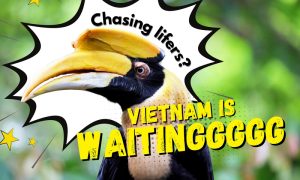


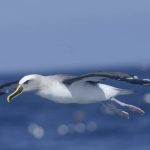
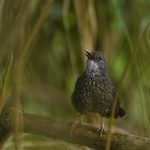
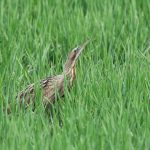
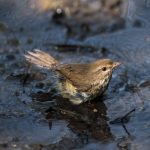
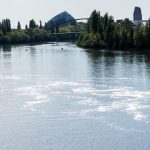

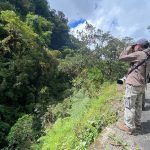
Another one for the wish list… you had me at “gorilla”…
A great bird list but what is Yellow-eyed Blackbird (Agropsar philippinus) doing in Uganda?
@Steve Clark – that may be a translation issue. There’s the Yellow-eyed Black-Flycatcher (Melaenornis ardesiacus) which has a synonym in English Yellow-eyed Black Thrush. That’s an Albertine Rift endemic and quite pretty too.